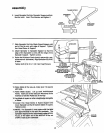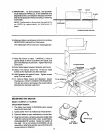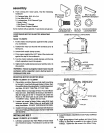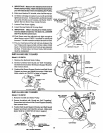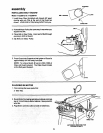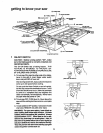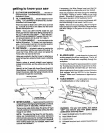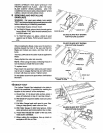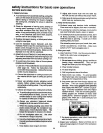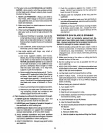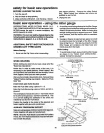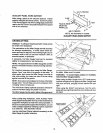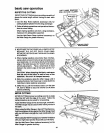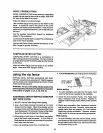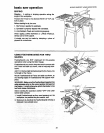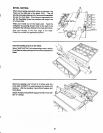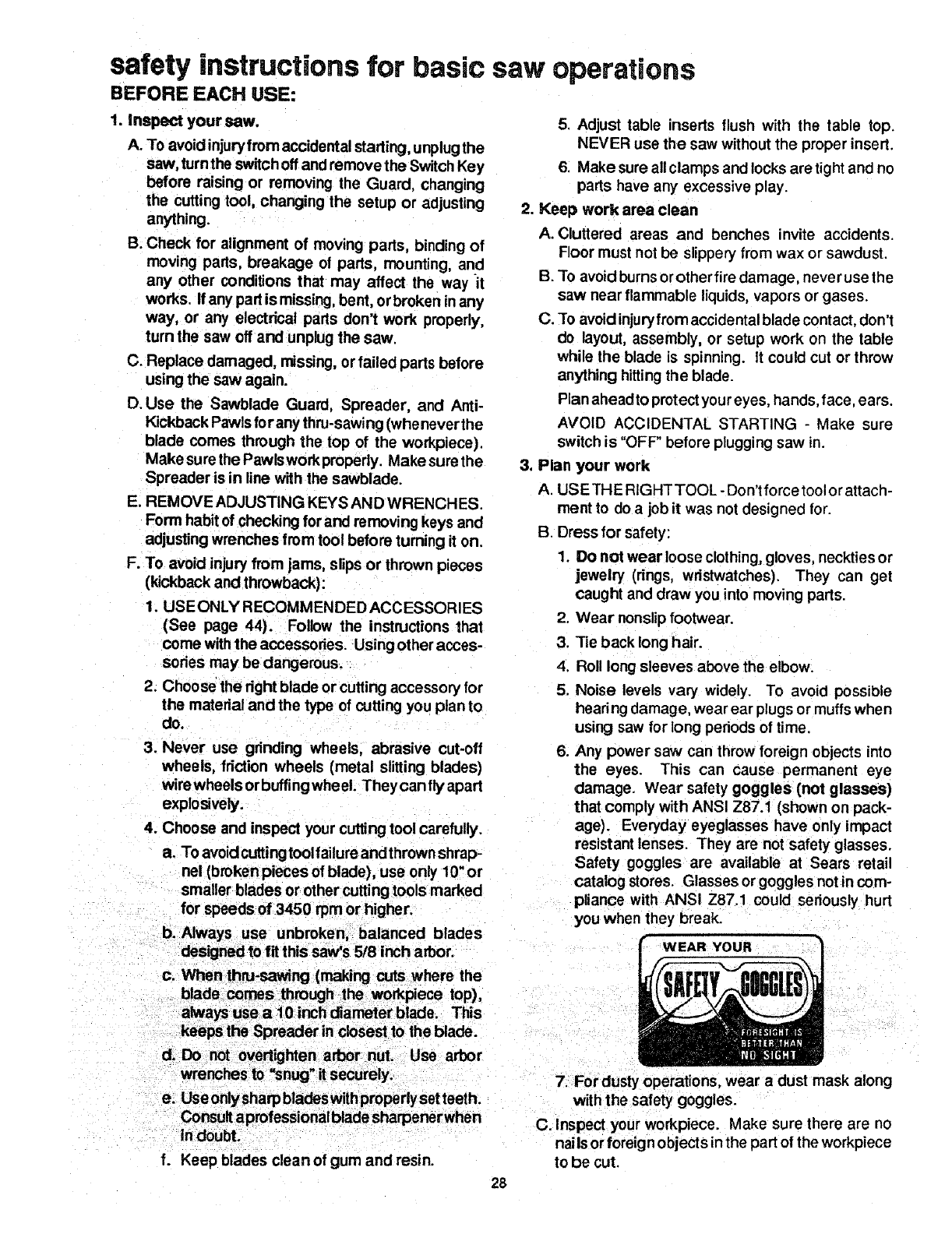
safety instructions for basic saw operations
BEFORE EACH USE:
1. Inspect your saw.
A. To avoid injuryfrom accidental starting, unplugthe
saw, turn theswitch offand remove the Switch Key
before raising or removing the Guard, changing
the cutting tool, changing the setup or adjusting
anything.
B. Check for alignment of moving pads, binding of
moving pads, breakage of pads, mounting, and
any other conditions that may affect the way it
works. If any partis missing,bent, or broken inany
way, or any electrical parts don't work properly,
turn the saw off and unplug the saw.
C. Replace damaged, missing, or failed parts before
using the saw again.
D. Use the Sawblade Guard, Spreader, and Anti-
Kickback Pawls forany thin-sawing (whenever the
blade comes through the top of the workpiece).
Make sure the Pawlswork properly. Makesurethe
Spreader is in linewith the sawblade.
E. REMOVE ADJUSTING KEYS AND WRENCH ES.
Form habit of checking forand removing keys and
adjusting wrenches from tool before turning iton.
F. To avoid injury from jams, slips or thrown pieces
(kickback and throwback):
1. USE ONLY RECOMMENDED ACCESSORIES
(See page 44). Follow the instructions that
come withthe accessories. Using other acces-
sories may be dangerous.
2. Choose"the right blade or cutting accessory for
the material and the type of cutting you plan to
do.
3. Never use grinding wheels, abrasive cut-off 6.
wheels, friction wheels (metal slitting blades)
wire wheels orbuffing wheel. Theycan fly apart
explosively.
4. Choose and inspect your cutting tool carefully.
a. To avoidcuttingtoolfailure and thrownshrap-
nel (broken pieces of blade), use only 10" or
smaller blades or other cutting tools marked
for speeds of 3450 rpm or higher.
b. Always use unbroken, balanced blades
designed to fit this saw's 5t8 inch arbor.
c. When thru-sawing (making cuts where the
blade comes through the workpiece top),
always use a t 0 inch diameter blade. This
keeps the Spreader in closest to the bade.
d. Donor overtighten arbor nuL Use arbor
5. Adjust table inserts flush with the table top.
NEVER use the saw without the proper insert.
6. Make sure all clamps and locks are tight and no
parts have any excessive play.
2. Keep work area clean
A. Cluttered areas and benches invite accidents.
Floor must not be slippery from wax or sawdust.
B. To avoid burns orother fire damage, never use the
saw near flammable liquids, vapors or gases.
C. To avoid injury frorn accidental blade contact, don't
do layout, assembly, or setup work on the table
while the blade is spinning. It could cut or throw
anything hitting the blade.
Plan aheadto protect your eyes, hands, face, ears.
AVOID ACCIDENTAL STARTING - Make sure
switch is "OFF" before plugging saw in.
3. Plan your work
A. USE THE RIGHT TOOL - Don't force tool or attach-
ment to do a job it was not designed for.
B. Dress for safety:
1. Do not wear loose clothing, gloves, neckties or
jewelry (rings, wristwatches). They can get
caught and draw you into moving pads.
2. Wear nonslip footwear.
3, Tie back long hair.
4. Roll long sleeves above the elbow.
5. Noise levels vary widely. To avoid possible
head ng damage, wear ear plugs or muffs when
using saw for long periods of time.
Any power saw can throw foreign objects into
the eyes. This can cause permanent eye
damage. Wear safety goggles (not glasses)
that comply with ANSI Z87.1 (shown on pack-
age). Everyday eyeglasses have only impact
resistant lenses. They are not safety glasses.
Safety goggles are available at Sears retail
catalog stores. Glasses or goggles not in com-
pliance with ANSI Z87.1 could seriously hurt
you when they break.
JR
enches to snug it securely. 7. For dusty operations, wear a dust mask along
e; Use onlysharp blades with properlyset teeth, with the safety goggles.
Consult aprofessionalblade sharpenerwhen
C. Inspect your workpiece. Make sure there are no
in doubt, nails or foreign objects in the part of theworkpiece
f. Keep blades clean ofgum and resin, to be cut.
28



